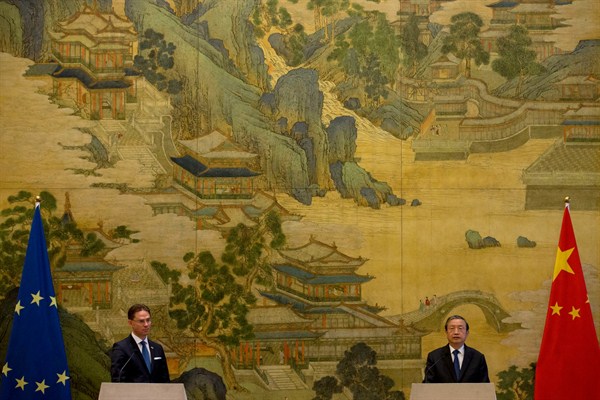After the collapse of multilateral trade talks at the World Trade Organization in Geneva in 2008, governments around the world went back to the drawing board to devise new trade strategies. As a second-best solution, trade officials increasingly looked to bilateral and plurilateral trade negotiations to generate commercial opportunities for domestic businesses and strengthen their economic and geopolitical positions in regions of strategic importance.
In anticipation of the failure of the WTO’s Doha Round, European Union leaders had already ended, in 2006, the EU moratorium on bilateral trade talks and made concluding comprehensive trade and investment agreements with emerging and developed economies a top priority of EU commercial diplomacy. In East and Southeast Asia, that EU negotiation strategy is now beginning to bear some fruit.
In December, the EU formally signed a free trade agreement with Vietnam; many of the important political details had already been finalized in August. The trade pact is a landmark deal for several reasons.

